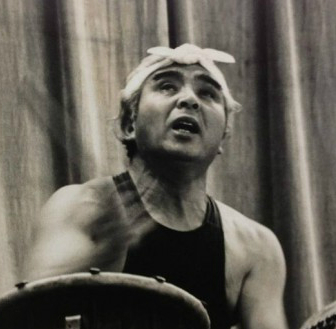
History of Taiko
Japanese origin and spread to America
In Japan
In Japanese, taiko literally means “drum,” though the term has also come to refer to the art of Japanese drumming, also known as kumi-daiko. Taiko has been a part of the Japanese culture for centuries. Centuries ago, taiko was used predominantly in the military arena. As it evolved, Japanese Buddhist and Shinto religions gradually began to take it on as a sacred instrument. Historically, it has existed in a multitude of other environments, including agrarian, theater, and the imperial court. The art of kumi-daiko, performance as an ensemble, originated post-war in Showa 26 (1951). It was created by Daihachi Oguchi, a jazz drummer who serendipitously stumbled across an old piece of taiko music. Wondering why taiko were never played together, he broke with tradition by forming a taiko drum ensemble. More recently, taiko has enjoyed not only a resurgence of interest in Japan, where there are over 4,000 taiko ensembles, but also transplantation and evolution in North America.

NORTH AMERICAN TAIKO
In this country, taiko has become a rich and varied form of drumming, as idiomatically North American as jazz or American Indian drumming. The first North American Taiko group, the San Francisco Taiko dojo, was created in 1968 by Grandmaster Seiichi Tanaka. San Francisco Taiko Dojo’s style was a fusion of Oedo Sukeroku, Osuwa Daiko and Gojinjyo-daiko styles. One year later, Kinnara Taiko of the Senshin Buddhist temple in Los Angeles was founded based on Japanese American Buddhist taiko. San Jose Taiko followed in 1973, with a focus on making taiko a Japanese American art form.
North American taiko may also be attributed with developing the art of drumbuilding using wine barrels rather than carving them out of a single log. Because wine barrel-drums are cheaper and easier to build, taiko has become accessible to many more groups outside of Japan and aided the widespread growth of taiko throughout the world.
COLLEGIATE TAIKO
The first collegiate taiko group in North America was UCLA Kyodo Taiko, founded in 1990 by Mark Honda. Stanford Taiko and Jodaiko (UCI) followed in 1992. Since then, collegiate taiko has been one of the fastest growing taiko phenomenon in North America! In 1995, Stanford Taiko started the Intercollegiate Taiko Invitational, an annual event in which many collegiate groups come together for a weekend of workshops and performances. The event has grown rapidly in size since its inception; currently, around 300 collegiate taiko players attend every year!